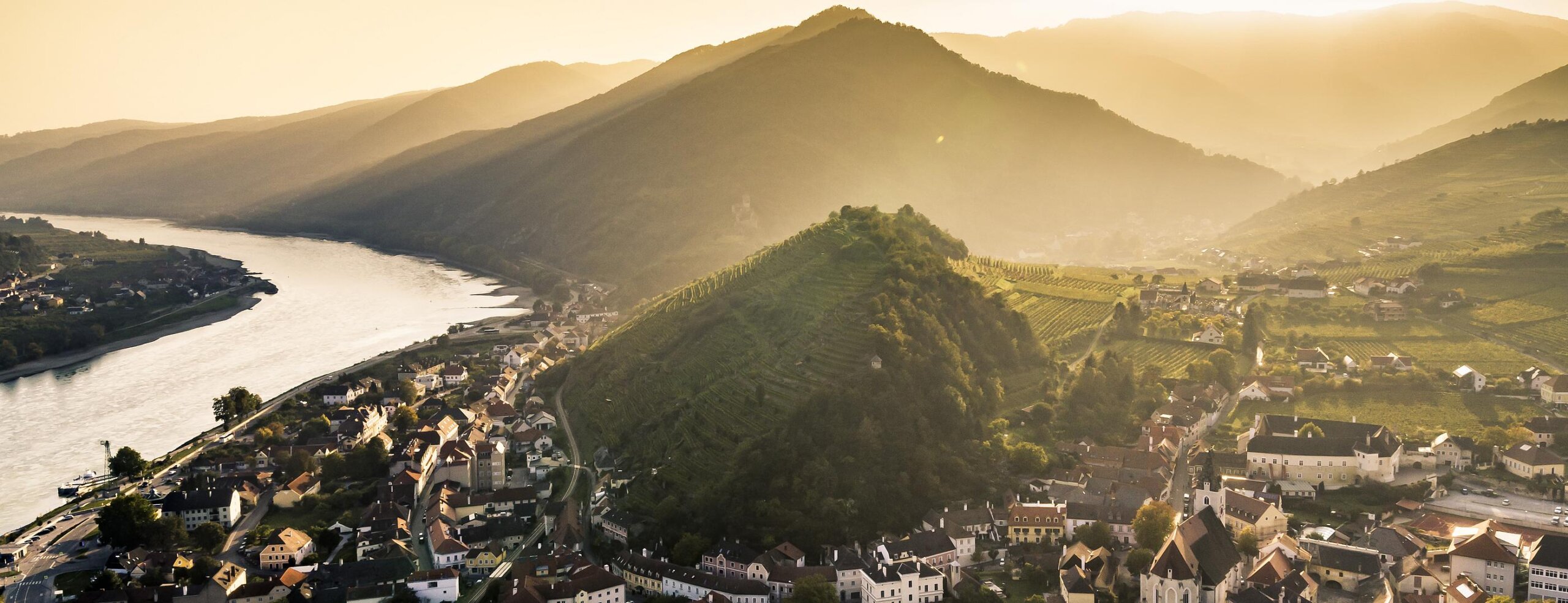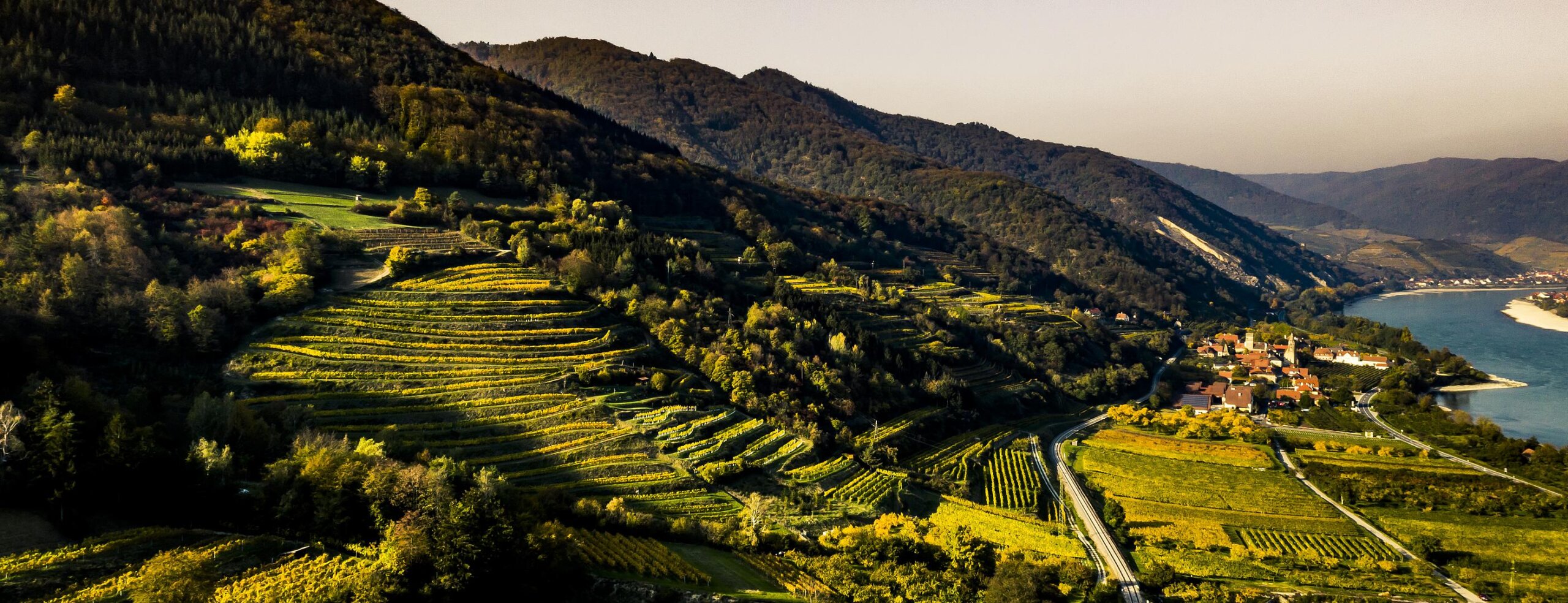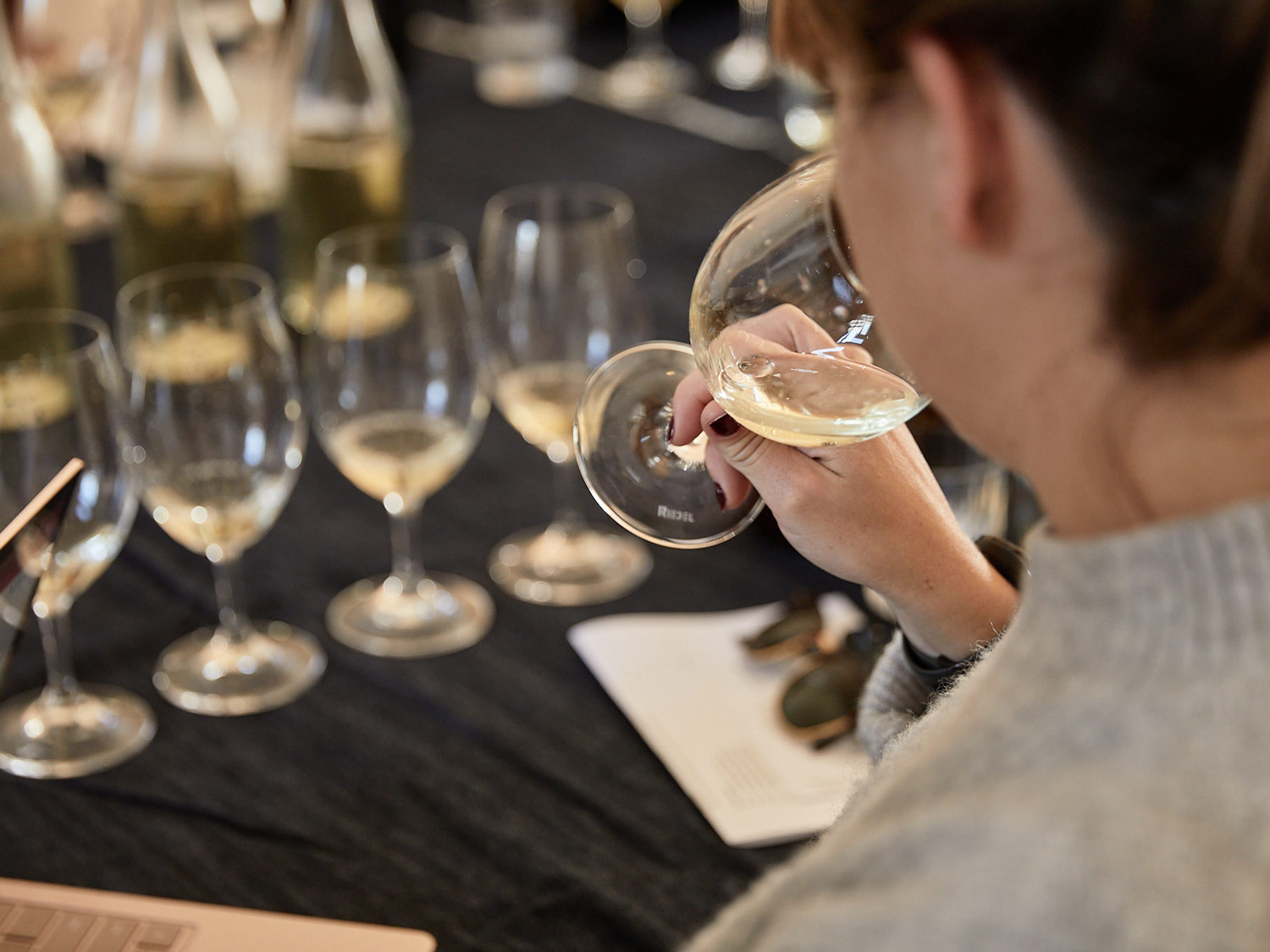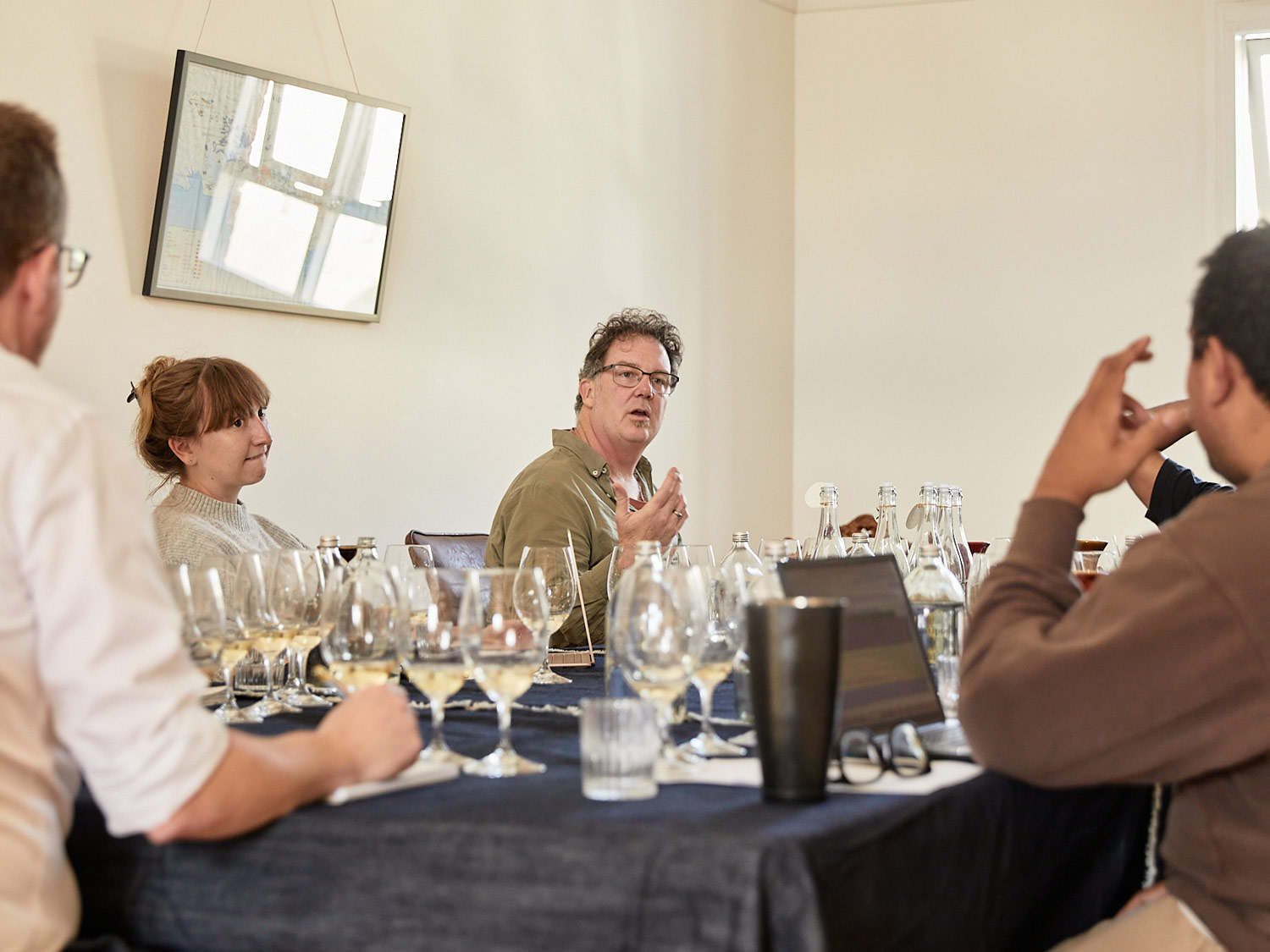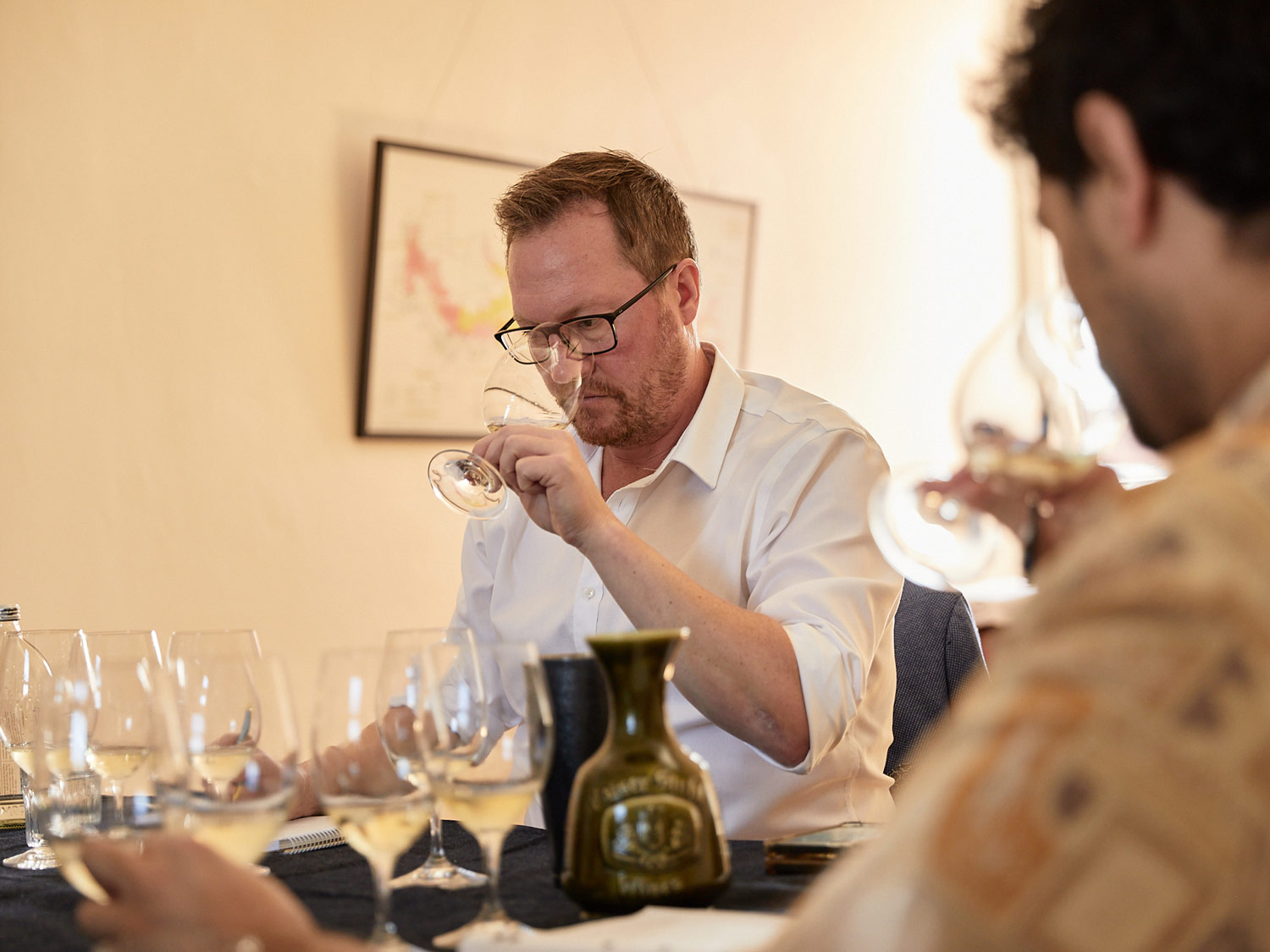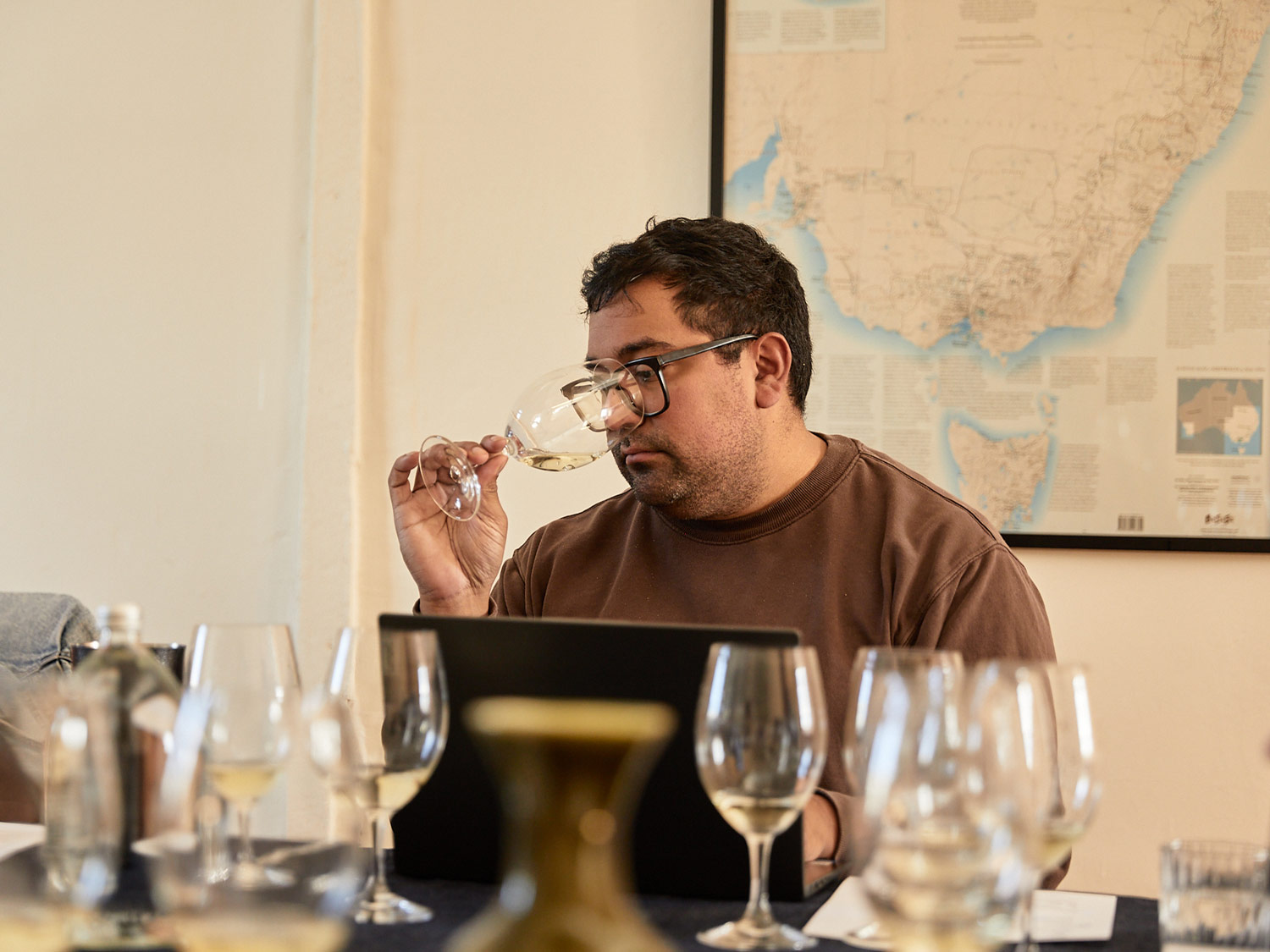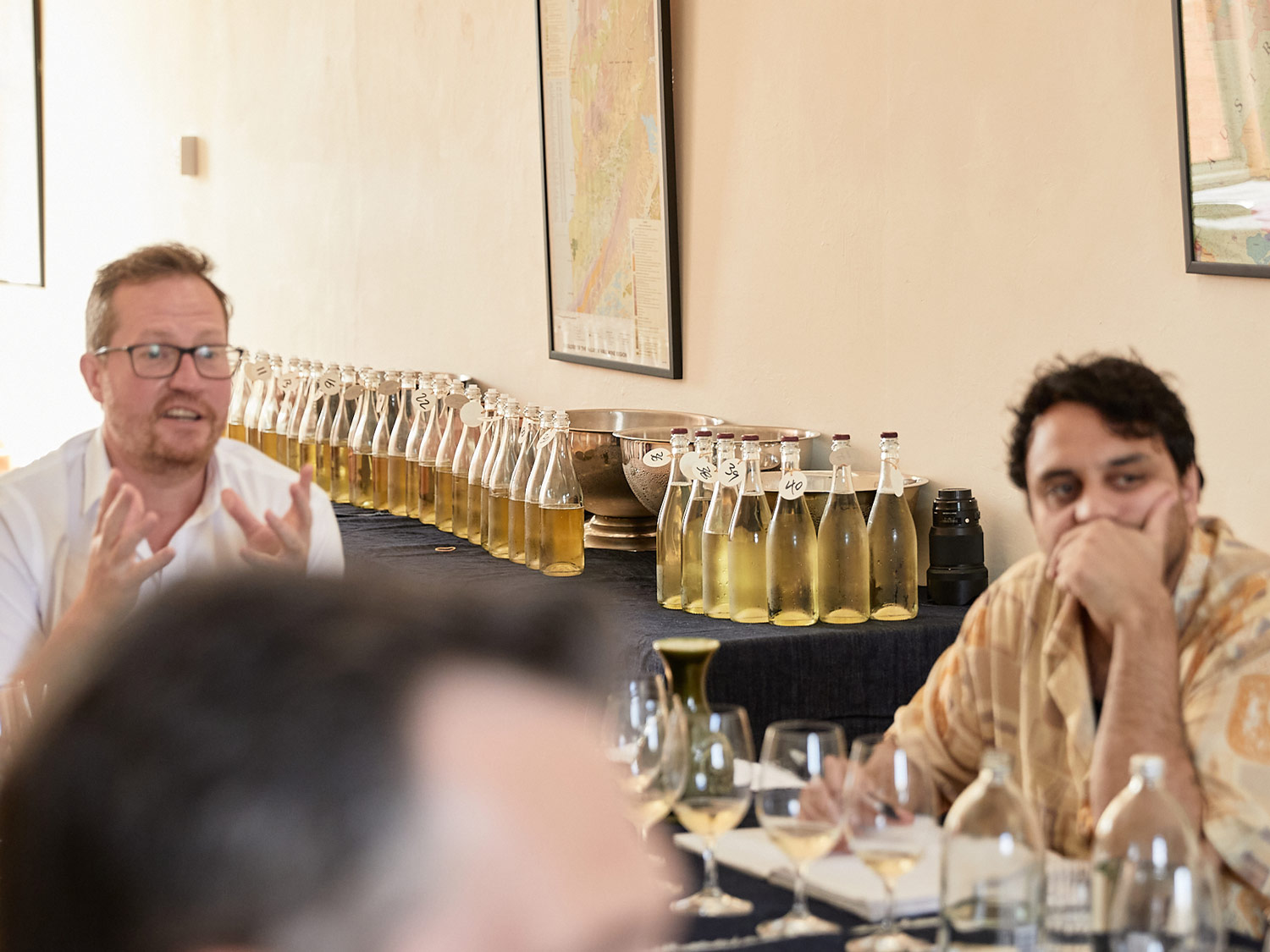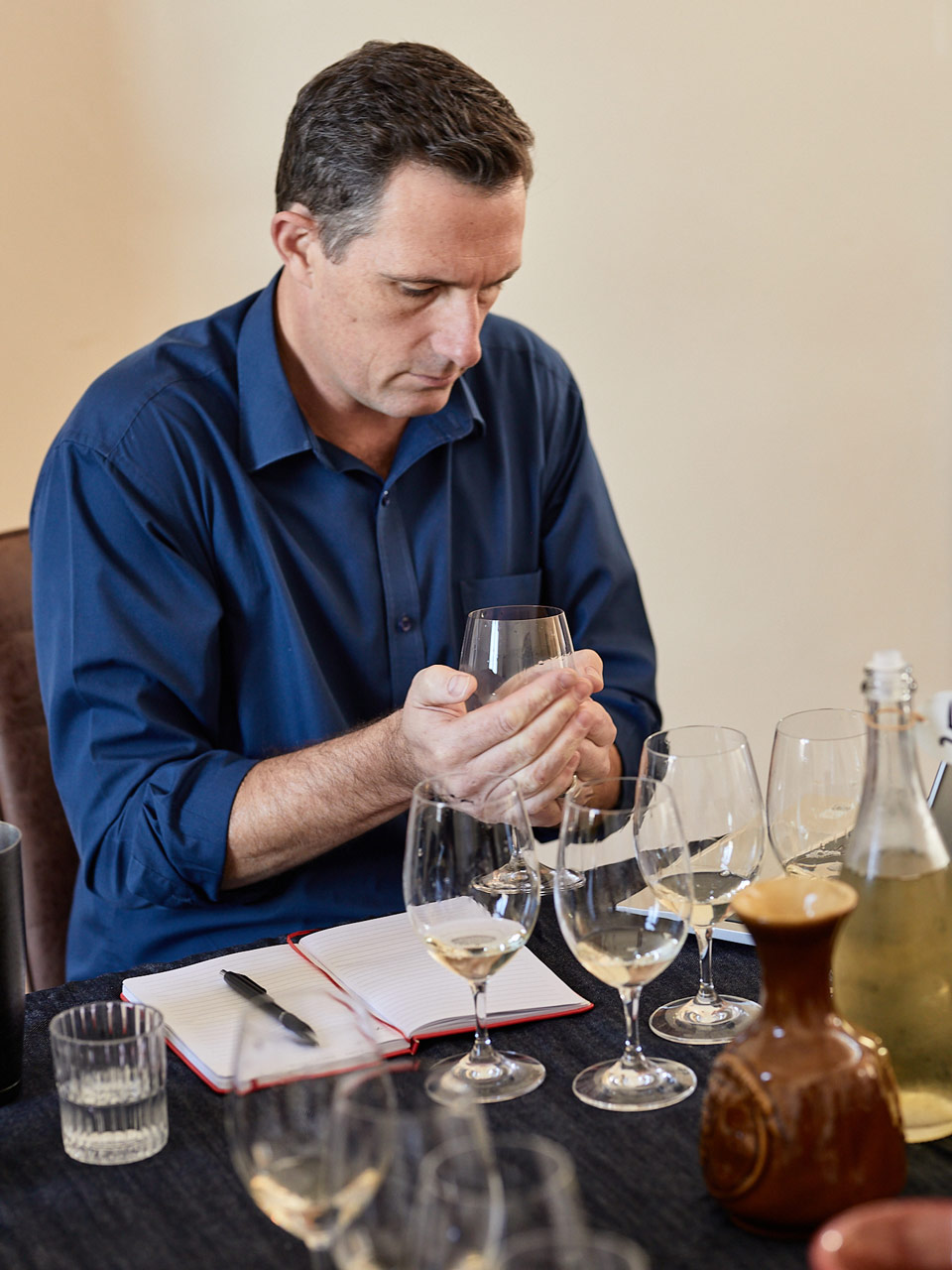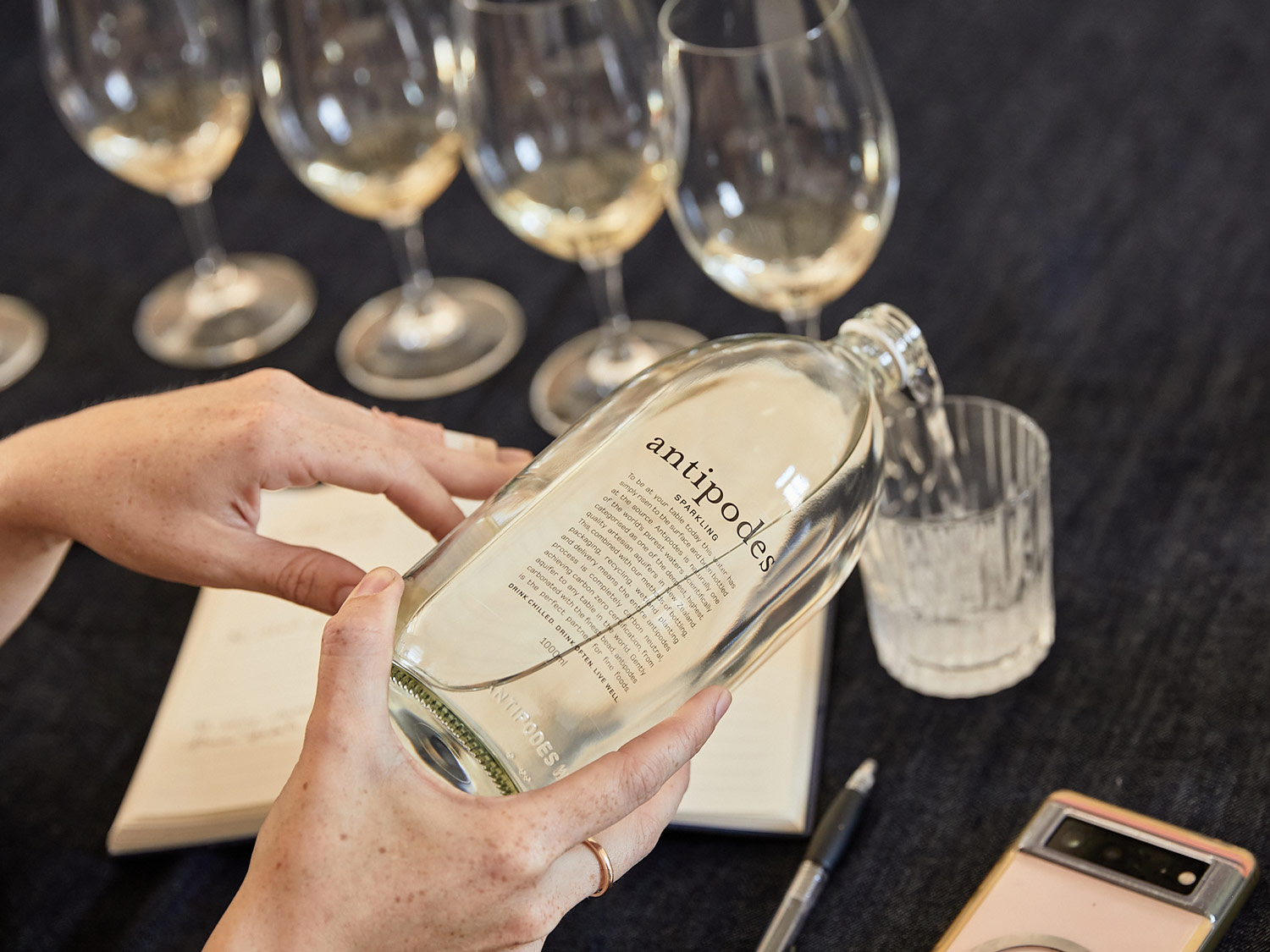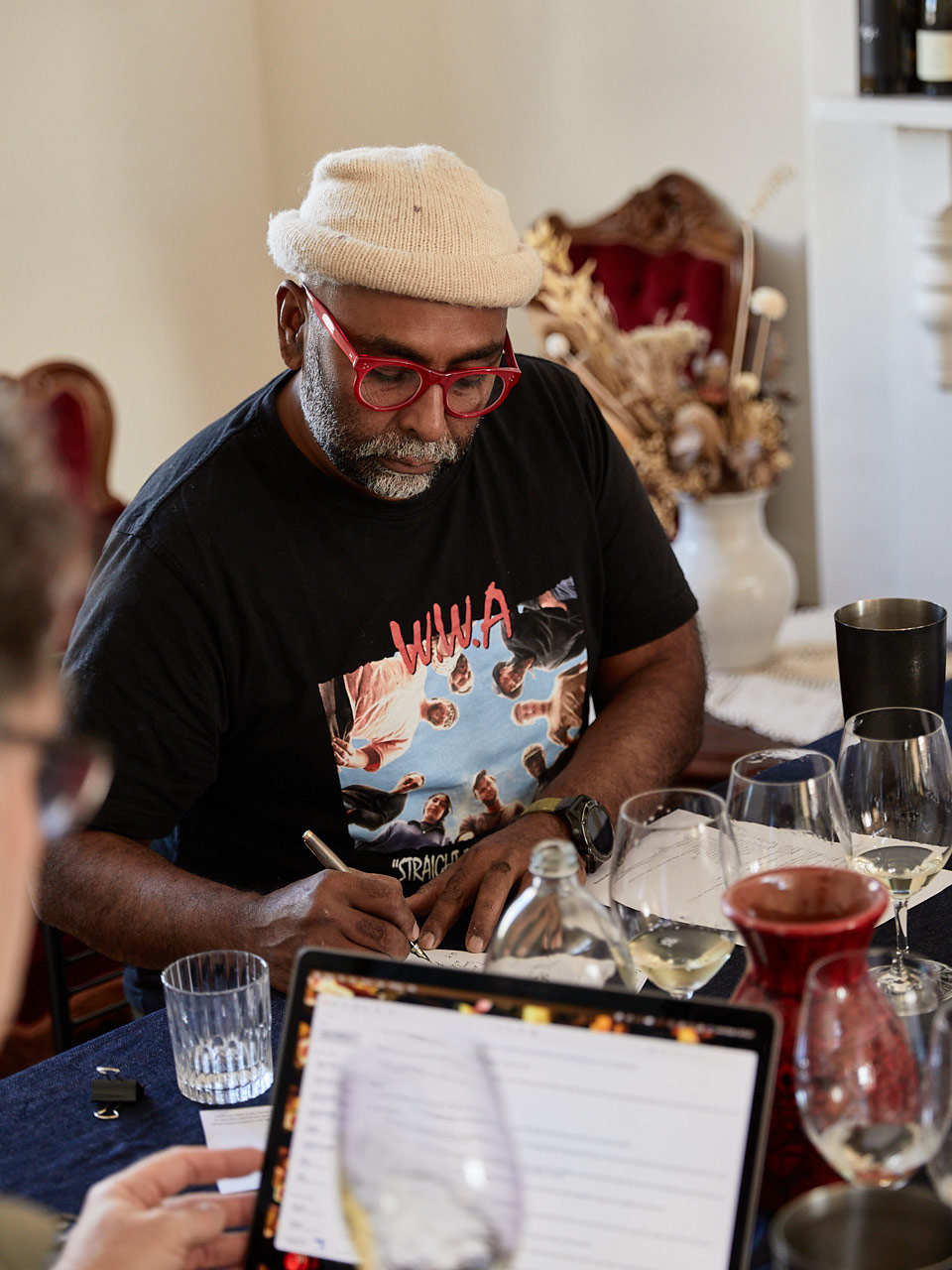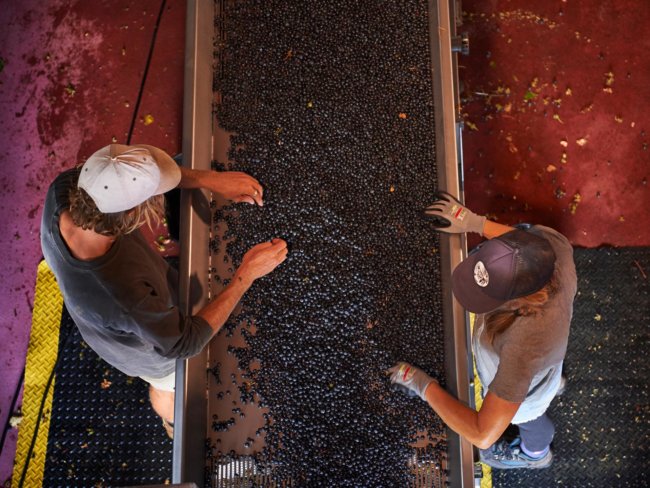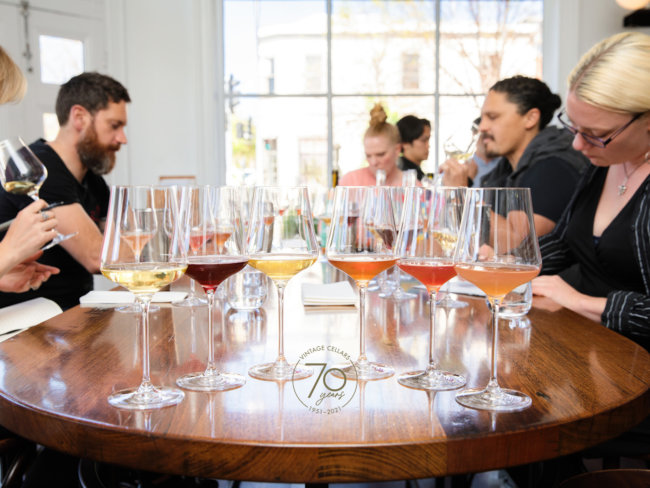The Top Grüner Veltliner in Australia
![]()
2021 Artis ‘Single Vineyard’ Grüner Veltliner, Adelaide Hills, $39.99 RRP
Fox had this as his top wine of the day, with Campbell and Nadeson also including it in their top-six selections. “This wine truly stood out as the epitome of elegance and charm,” effused Fox. “Orchid-like fruits took centre stage, with delightful hints of pear and toasted cashew nut gracefully appease the scenes. Upon the first sip, a lively burst of white pepper spice tantalizes the palate, accompanied by subtle whispers of ginger, imparting a delightful savory dimension to the wine. The balance achieved here is nothing short of sublime, with a texture that is both captivating and engaging, and a weight on the palate that embodies the essence of Grüner Veltliner. The possibility of barrel fermentation only enhances its allure, elevating it to new heights of excellence. This is not merely a wine for Grüner enthusiasts, it’s a gem that appeals to all wine lovers alike. A mid-weight powerhouse, it effortlessly showcases remarkable complexity and a captivating personality that leaves a lasting impression.” Campbell added: “A heavier example here, heading toward Chardonnay territory. The nose is vibrant. Think cucumber skin, celery, ginger, white pepper and five spice all permeating the olfactory. The palate is super juicy and has a medium weight, it started fine then thickened out, its more complex than initially thought. It’s zesty, zingy acids are a hallmark alongside mixed citrus rind, crushed nuts, celery and sage… For when Riesling just won’t do it. I just want a spicy pork tonkatsu, for the acid to carve up. Or an eggplant curry to digest with this wine. Good, different! This wine has a Sunday with friends, written all over it.”
![]()
2022 Aces & Arrows Grüner Veltliner, Adelaide Hills, $30 RRP
Both Hulme and Campbell had this in their top two, while Nadeson had it in his top three selections. “Potently aromatic, the nose is laden with lean but concentrated fruit aromas spanning lemon balm, green melon, and gooseberry,” wrote Hulme. “A touch of grassy snowpea character announces this as one of the less-ripe examples, yet it doesn’t want for intensity. Ample pepper spice and dusty forest floor notes elevate this to one of the better lean expressions. It finishes with fresh acidity that carries the spicy finish.” “A refined and elegant wine that showcases purity of fruit,” said Nadeson. “It offers delicate aromas of green apple, citrus zest, and wild white flowers on the nose. The palate is crisp and complex, with flavors of lemon, lime leaf and stinging nettle, and a complementary minerality. The finish is bright, refreshing light and yet still manages to be interesting enough to make you go on a journey.” Campbell declared, “If this was art, it would be a Roy Lichtenstein! The wine has a popping orange colour, saffron, bath salts, lychee, lemon and lime, that goes ‘bam’ on the nose. Then the bangin’ acidity takes over. Loads going on here just like pop-art. The palate has a lush medium weight, it’s so expressive. Flavours of tangerine with a grapefruit punch. A super refreshing glass of wine. I have only one question: do they make it in Magnum (1500mL)?”
![]()
2022 Stockman’s Ridge ‘Signature’ Grüner Veltliner, Orange, $40 RRP
Dowling and Rush both had this in their top three wines of the day, with Wyse and Hulme also having it in their top selections. Rush noting, “This was my favourite nose to revisit because it took me through a wonder of Eastern flavours. It was delicate plumes of Japanese incense, salty-sweet satay sauce (think roasted peanuts, coconut milk and kecap manis), ginger, lychee, freshly squeezed lemon and lime juice, starfruit, yoghurty lassi. Something slighty herbal too, like a fresh mint tea or eucalyptus. Absolutely fascinating and just think of the delicious pairings you could do.” Dowling’s note read, “Stone fruit, fresh cut herbs and spice alongside some savoury notes, interesting nose. This wine is an explosion of fruits including citrus, rambutan, stone fruits ably backed up with some bracing acidity giving some frame to the wine. On the fuller bodied side, this is a wine to enjoy with a myriad of foods.” “Wine opens lithe yet textural, very silky and luxurious mid-palate with some bright green ginger, lemon curd, peach blossom, acacia, daffodils, long and elegant finish,” said Wyse. “Thinking some Japanese sashimi with yuzu koshu, unagi, or maybe scallops grilled on the half shell.” “A remarkably savoury expression, the nose is dominated by turned earth, tarragon, sweet pea, white pepper, and an oceanic, briny quality,” added Hulme. “A sense of creamy nougat-like aroma, but along with a touch of citrus and stone fruit plays merely a supporting role.”
![]()
2018 Mt Bera ‘Boundless Horizons’ Grüner Veltliner, Adelaide Hills, $40 RRP
This was Hulme’s top wine of the day, with Maltby including it in her top two. “One of the riper expressions, and very complex,” said Hulme. “There is a wide spectrum of fruit here that spans preserved citrus, white peach and starfruit. White pepper and turmeric offer well-integrated dry spice character and the nose rounds out with a dusty quality that is distinctly reminiscent of forest floor in the Australian bush. Modestly tart among its peers, the long finish is carried by the depth and breadth of flavour and rather mouth-watering acidity.” “Heady and exotic, a fantastic exploration of a riper style,” noted Maltby. “Opens with intense florals, frangipani, musk, lychee and a bit of pithy pink grapefruit. The palate is generous but restrained with fleshy tropical fruits and a touch of toasty nougat complemented by peppery Vietnamese mint and a vibrant, driving acid line. Serious, grippy phenolics are nicely balanced by a pleasing waxy character, creating a long and cohesive drinking experience. This bottle would disappear very quickly beside a bowl of curry laksa at my house.”
![]()
2022 Collector ‘Ledger’ Grüner Veltliner, Tumbarumba, $34 RRP
This was Campbell’s top wine of the day, with Fox including it in her top two. “A sophisticated example, with acute florals, like apple blossom and jasmine with notes of chalk and fairy floss,” said Campbell. “The palate is lacy, with good zingy refreshing acids, that play in the green spectrum as it unfurls down the palate. Honeydew melon strikes with a subtle sweetness, followed by snow pea tendrils, alfalfa, sage and thyme flavours. The mouthfeel shows the balance and poise of a great ballet dancer. This is savory and complex. This would be a great alternative to a racy pinot grigio, just with more fruit! A lot going on here, the wine is just screaming out for some tuna sashimi or better still, seared Tasmanian salmon drizzled with honey, garlic and sea salt. Wine-Of-The-Day!” While Fox’s note read: “This wine unfolds with an enticing array of exotic Asian spices, accented by the crisp freshness of cucumber peel and the delicate tendrils of fresh pea shoots. Each element is meticulously balanced, with a little phenolic grip adding depth and dimension to the palate. Vibrant limey acidity intertwines with a luscious, mouth-filling texture, driving the wine forward with remarkable finesse. Subtle nuances of radish and hints of chives contribute to the wine’s aromatic herbaceous profile, enhancing its captivating complexity. With a focus on the citrus spectrum, it’s evident that the fruit was harvested on the earlier side, leading the wine to have a refreshing zestiness and a sense of vitality. This wine embodies a more modern approach, showcasing the winemaker’s skilful artistry. The decision to harvest the fruit slightly earlier leads to an elegant texture, heightened by a touch of skin contact. It’s a testament to precision winemaking, where every detail is carefully considered to craft a wine of exceptional balance and finesse.”
![]()
2022 O’Leary Walker ‘Seasonal Release’ Grüner Veltliner, Clare Valley, $35 RRP
Hulme had this in his top three wines of the day, while Maltby, Rush and Fox also had it in their top selections. “Here, a whiff of kerosene barely obscures the tightly wound nose of preserved citrus, lemon thyme, bergamot, and dry spice,” noted Hulme. “There is texture and a hint of rye bread character perhaps hinting at some well-judged lees work. Despite some noticeable phenolic bitterness on the palate the wine finishes long, carried by the distinctly floral and spicy flavours.” “It was buttery, lemony, oaky, toasty and mineral with a fabulous bone-dry finish,” chimed Rush. “What a treat, and as I revisited it a couple of degrees warmer, those fun Grüner candied flavours came to the forefront, faintly reminiscent of eating a toasted vanilla marshmallow.” Fox wrote: “This wine opens with a little reductive note, adding an intriguing dimension from the start. It immediately entices with a medley of flavours, including honeydew melon, pink grapefruit, and a subtle touch of lemon curd. The harmonious interplay of citrus and stone fruit characteristics on the palate is unified by a lively lemon acidity, providing a sense of cohesion and balance. A pronounced definition emerges, with lemon citrus notes elegantly tying together the palate experience. Delicate nuances of honeysuckle, cucumbers, and green pea shoots further enrich the sensory journey, adding layers of complexity. With its impeccable balance and finesse, this wine epitomizes elegance in every sip. A seamless integration of flavours driven by crisp acidity and freshness characterizes this wine’s profile. Its inviting nose sets the stage for an unforgettable tasting experience, inviting you to delve deeper into its captivating complexity.”
![]()
2022 Stage Door Grüner Veltliner, Eden Valley, $28 RRP
This was in Wyse’s top two wines, while Campbell and Nadeson also had it in their top-six selections. “Lots of dense dusty minerality, river stones, some citrus, especially calamansim,” noted Wyse. “Smoked sea salt, lavender, and yet more minerals unwind on the mid-palate. Approaching the baroque heights that are sometimes achieved by producers in the Wachau with the variety.” “At the fuller end of the spectrum, yellow in colour, full round nose of stone fruit,” said Campbell. “The palate is all: orange segments, citrus marmalade, peach, and crushed cashews meld with almond notes. This is endearing. It’s like a hug and I want more, but I don’t know why. I keep coming back to this wine.” While Nadeson wrote: “This wine delivers delicious Grüner character in a racy yet full way. The expected lemon, lime, grapefruit are all there but this time a subtle hint of star fruit and the tropics is also detected . The palate is complex white pepper, tarragon and nectarines . The finish is long and satisfying.”
![]()
2023 CRFT ‘The K1 Vineyard’ Grüner Veltliner, Adelaide Hills, $31 RRP
This was in Rush’s top two wines, while Fox also had it in his top-six selections. “This wine unfolds with an enticing array of exotic Asian spices, accented by the crisp freshness of cucumber peel and the delicate tendrils of fresh pea shoots,” said Fox. “Each element is meticulously balanced, with a little phenolic grip adding depth and dimension to the palate. Vibrant limey acidity intertwines with a luscious, mouth-filling texture, driving the wine forward with remarkable finesse. Subtle nuances of radish and hints of chives contribute to the wine’s aromatic herbaceous profile, enhancing its captivating complexity. With a focus on the citrus spectrum, it’s evident that the fruit was harvested on the earlier side, leading the wine to have a refreshing zestiness and a sense of vitality. This wine embodies a more modern approach, showcasing the winemaker’s skilful artistry. The decision to harvest the fruit slightly earlier leads to an elegant texture, heightened by a touch of skin contact. It’s a testament to precision winemaking, where every detail is carefully considered to craft a wine of exceptional balance and finesse.” While for Rush, the wine unlocked nostalgic olfactory memories: “How can a wine make you think of your primary school tuckshop? Grüner has been playing tricks on me where I can visualise myself in line, the smell of asphalt in the sweaty heat, salty fingers, applying Lipsmacker lipgloss with it’s peachy, lanoline flavour. The girl in front of me is sucking on a frozen cup of lime cordial and I’m up next to buy a mango Weiss bar. These flavours swim in the glass – with such a playful lime hue – and make me happy Aussie Grüner matches fun fruit character with a serving of savoury nostalgia if allowed.”
![]()
2021 Guthrie ‘Wild Grüner’, Adelaide Hills, $30 RRP
This was Dowling’s top wine of the day. “Savoury, almond mealy, nuttiness and complex nose with scents of jasmine and lime zest,” he described in his tasting note. “Super interesting flavours of grapefruit and guava on the palate. It’s a clean and bright eyed wine on one hand, and textural and complex on the other. So intriguing! Lovely long and pleasing finish, a wine of merit. Would be a super match to saucy chicken dishes or roast pork.”
![]()
2022 Chalk Hill Grüner Veltliner, Adelaide Hills, $35 RRP
“This Grüner Veltliner is a true Goldilocks wine, striking the perfect balance between richness and freshness,” said Nadeson, selecting it as his top wine of the tasting. “It opens with aromas of crisp green apple, citrus zest, and just a hint of white pepper. On the palate, flavours of ripe yellow pear, Myer lemon and chalky minerality work harmoniously. The wine has a medium body which is balanced by lively acidity – the lasting effect is you craving another sip. In one word, effortless.”
![]()
2022 Lark Hill ‘Estate Grown’ Grüner Veltliner, RRP $45
Rush had this as her top wine of the tasting. “It’s very amusing to taste an entire cheese board through a wine and probably why it was my number one,” she said. “It had every element you wanted on the board: salty, creamy brie oozing over buttery Lavosh, dried apricots, honey and it’s waxy comb. I’m shocked at how many times I wrote down toast or yeast for this bracket because I loved that the white peppery note we see and love in Grüner Veltliner also melted into crispy burnt crusts. Delicious!”
![]()
2023 Artwine ‘In The Groove’ Grüner Veltliner, Adelaide Hills, $45 RRP
“Lilac, honeysuckle, white peach, layers of mandarin, lemon, lime leaf,” wrote Wyse, placing this as his top wine of the day. “Minerals parade through the mid-palate, complemented by cider apples and bright pear, finishing with a full fat yoghurt with a dollop of kaffir lime curd. White pepper and ginger play a supporting role. I want to drink this with a Thai larb salad or Hainanese chicken rice.”
![]()
2023 Alpha Box & Dice ‘Obligato’ Grüner Veltliner, Adelaide Hills, $32 RRP
“It isn’t often that a wine gets me feeling all of the emotions, but with this wine I experienced one of those instant, electrifying connections,” said Matlby, placing this as her top wine of the tasting. “This wine is all about the interplay of texture and spice, with a funky hit of Szechuan pepper right up front, followed by structured, chewy florals reminiscent of earl grey tea. Jasmine, ginger root and a hint of herbaceous spice tease the nose, while bright green apple, citrus zest and melon sit pretty on the mid palate. Tightly coiled in the core, with seamlessly integrated acid and elegant silty phenolics – there are no edges or straight lines here. Handling is so effortless I can almost taste the Grüner fruit. Drink the first bottle alone, for the sheer pleasure of it, and then pair the second… and third… and fourth… with a big pot of seafood chowder or some late-night dumplings.”
![]()
2023 Chain of Ponds ‘Unchained’ Grüner Veltliner, Adelaide Hills, $25 RRP
This was Nadeson’s second top wine of the tasting. “This wine is a luxurious and complex wine and showcases the influence of lees and perhaps oak aging,” he said. “On the nose, it exudes aromas of ripe stone fruits, such as peach and apricot, complemented by hints of lychee, tropical fruit and toasted nuts. The palate is rich and creamy, with flavours of baked apple strudel , honey, subtle spiciness and the smallest hint of vanilla. The lees aging adds a velvety texture and depth to the wine, while the use old oak imparts a roundness. A sophisticated and indulgent drinking experience.
![]()
2023 RedHeads Grüner Veltliner, Adelaide Hills
Dowling had this in his top two wines of the day. “Exotic nose, white flowers and lychees along with tell-tale citrus fruits,” he noted. “Ripe peach, nectarine and ruby grapefruit on the palate alongside some white pepper and nashi pear. Long lingering crunchy and cleansing finish. Terrific wine!”
![]()
2022 BK Wines ‘Ovum’ Grüner Veltliner, Adelaide Hills, $40 RRP
Wyse and Rush both had this in their top-six wines. “Layers of pineapple, starfruit, white pepper and ginger fade into a soft mid-palate of calamansi, persian cucummber, and lime curd, with some sharp minerality,” wrote Wyse. “There’s lemon verbena, thyme, and tarragon playing a supporting role. Good for sushi, smoked fish, or soft bloomy cheeses.” “Familiar flavours of apple pie, stewed Granny Smith apple, burnt sugar, flaky pastry and cream,” said Rush. “The mouthfeel was divine as it coated your tongue but finished savoury like seashell or sea spray. I am so inspired now to experiment with Grüner Veltliner – we’ve come a long way in such a short time.”
![]()
2023 Tomich ‘Woodside Vineyard’ Grüner Veltliner, Adelaide Hills, $25 RRP
Wyse had this in his top three wines of the day. “Mango seed, ginger paste muddled with white pepper and grass,” he noted. “Palate has some ripe lime juice, nashi pear, chamomile, and there’s also a hint of passionfruit on the finish. Would be excellent with heartier fare, roast chicken, schnitzel, goulash even.”
![]()
2023 Wangolina ‘A-Series ‘Grüner Veltliner, Mount Benson, $28 RRP
This was in Fox’s top three wines of the tasting. He wrote, “This wine exudes a distinctively modern character, evident in its nuanced winemaking techniques. While the possibility of extended skin contact adds depth, the potential lees stirring further enhances its texture and mouthfeel. This meticulous approach amplifies the delicate fruit flavours, with granny smith apple, pear, and subtle hints of lychee delicately unfolding from the glass. Green herbaceous notes also sit on the palate, adding layers of complexity. The wine possesses a satisfying weight that enriches the overall mouthfeel, culminating in a lingering finish punctuated by white pepper spice. Indeed, this wine is a testament to the art of balance and focus on spice-driven allure, offering a contemporary interpretation that delights the senses.”
![]()
2023 Low Boi Grüner Veltliner, Mount Barker, $33 RRP
Maltby had this in her top three wines of the tasting. “Quite a classic expression of Grüner, a little shy on the nose but incredibly lengthy and present on the palate,” she said. “Green melon, jasmine and a little white stone fruit action. Beautiful tactile structure with firm coating phenolics that really draw this wine out. The palate is crisp and pure with zesty grapefruit, white pepper and fresh ginger, while a tiny hint of reduction gives a bit of roundness to the finish. Elegant and pleasing, good to impress the in-laws!”
![]()
2023 Castle Rock Estate Grüner Veltliner, Porongorup, $36 RRP
Hulme, Campbell and Dowling all had this in their top-six wines. “Aromatic and savoury with citrus and peach fruit supporting a deeply spicy profile of white pepper, turmeric and coriander powder,” wrote Hulme. “There is a touch of pickle brine volatility here too, but the palate finishes fresh and pure.” “This wine is fine-boned and gripped with pheonic crunch,” said Campbell. “Its nose is overt and floral: jasmine, apple blossom, vanilla hints and cut thyme. The mouthfeel is medium weight with cut pear, rocket, green apple and nectarine. Some subtle lees and cheesy notes make you want for more. Looking a little oily in that viognier spectrum, but still with that Grüner spark! Turn your phone off, pass me a chicken and egg donburi from the local Japanese with some Netflix and chill, please. ON the richer end of the spectrum, there’s something for everyone here!” While Dowling noted: “Minerals and nougat on the palate, alongside some intense citrus fruit notes and crunchy bright acidity. This has poise and energy to burn, and a lingering ‘more please’ finish. If you like the whites of Burgundy or Chablis, this is a wine to seek out!”
![]()
2022 Precious Little Grüner Veltiner, Adelaide Hills, $25 RRP
“The nose of this wine captivates with its nuanced intricacy and restrained elegance, drawing you in from the start,” said Fox, placing this among his top selections. “Initial impressions unveil a symphony of lemon and lime citrus notes, intertwined with delicate white blossom aromas, all underpinned by a lively, zesty acidity that sets the stage for what lies ahead. Upon tasting, the fruit reveals its depth and intensity, with orchard fruits like nashi pear and green apple taking centre stage, accompanied by nuances of star fruit, celery, and chamomile. Subtle phenolic grip adds dimension to the texture, resulting in a wine that leaves a lasting impression on the palate, lingering long after each sip. In achieving the holy trinity of flavour, texture, and balance, this wine offers a truly transcendent experience for the senses. However, it’s not a wine for those seeking mindless enjoyment – rather, it demands your attention and rewards each careful sip with layers of complexity and depth. It’s the kind of wine that beckons you to savour every moment, reluctant to reach the end of its exquisite journey.”
![]()
2022 Seppelt Grüner Veltliner, Henty, $27 RRP
Campbell gave this wine a top-six finish. “Wow! This is Disco is a glass. With the lead vocalist singing, ‘Hold Me, Thrill Me, Kiss Me.’ This is the wine you want at a house party. Everyone will ask you, ‘What is this?’ Its colour is iridescent. Its aromas jump from the glass, celery salt, quinine, cumquat, loads of finesse here, sublime energy, cucumber, fresh cut lime, green pear flavours, and curls of apple skin, complete the palate. It has zingy mouthwatering acids, harnessing the power of this wine. More energy here than an aerobics oz style presenter in the 80’s! Its finish is so long on the palate, yet uncomplicated. Broad fruit flavours, acid, weight, texture, phenolics, life! Just give me some pork and pistachio terrine or simple summer linguine with lemon, chilli and really good evoo. This will age for 7 – 10 years. I want a bigger glass!”
![]()
2023 Hahndorf Hill ‘Gru’ Grüner Veltliner, Adelaide Hills, $34 RRP
This featured in Dowling’s top-six list. “Super duper exotic nose including lychees, jasmine, white roses and Turkish delight. Awesome! More lychees on the palate alongside some grapefruit, quince and spice. Has some weight and texture, with some phenolics giving grip to the wine. Some citrus like acid brings it all together. It’s on the riper side and will please those who like riper pinot gris and chardonnay.”
![]()
2023 Billy Button ‘The Groovy’ Grüner Veltliner, $30 RRP
“I loved how pretty this wine felt,” said Rush, placing it in her top-six wines of the tasting. “It was graceful, with lifted aromas. Jasmine and white rose petals flavours. Acid that felt enticing rather than harsh, like mouthfuls of white peach and fresh cream. A dusting of white pepper smokiness to juxtapose these light fruit characteristics. A great alternative white wine for the pinot gris drinker in the mix.”
![]()
2020 Mt Bera ‘Gruvee’ Grüner, Adelaide Hills, $25 RRP
“Some fun complexity here, with a bit of richness,” noted Maltby, placing this in her top-six. “Fresh lemon rind and makrut lime leaf are offset by spicy Thai basil and a little hint of marzipan. The palate is bright and herbaceous with great tension and plenty of silty structure. Flavours of spiced pear add generosity, but finishes strong with oodles of pepperiness. One for the cheeseboard.”
![]()
2022 Nacre Grüner Veltliner, Alpine Valleys, $32 RRP
“Lovley wine, has everything to like in Grüner Veltliner,” declared Dowling, placing this in his top-six selections. “ Savoury but at the same time packed full of citrus and stone fruits on the nose and into the palate. There’s some baked apple pie creaminess to this wine, alongside some almond meal notes and ripe nectarines. Really long finish. Would suit a good old fashioned seafood stew or fish pie!”
![]()
2023 Berrigan ‘Shining Rock’ Grüner Veltliner, Adelaide Hills, $29.95 RRP
“Distinctly Grüner Veltliner. A refreshing and high acid version with notes of white pepper, dill, and gherkin on the nose,” noted Nadeson when naming this in his top-six wines of the tasting. “On the palate, flavors of lemon, lime, grapefruit pith, green bean, and pear are also present. A very harmonious and intriguing wine.”
![]()
2023 Paracombe ‘Reserve’ Grüner Veltliner, Adelaide Hills
“Preserved citrus and ripe stone fruit take a back seat to developed honey and hay characters,” wrote Hulme in his tasting note when including this wine in his top-six selections of the tasting. “There is a distinct briny note here too, which is complemented by fresh green herbs. It is complex and aromatic. It finishes with fresh acidity that belies its rich flavour profile.”
![]()
2023 O’Leary Walker Grüner Veltliner, Clare Valley, $35 RRP
Matlby had this in her top-six wines of the tasting. “A super refreshing style with bright aromas of lemon zest, lime pith and crisp green apple. Tightly wound on the mid palate, playful mealy texture provides depth and structure to clean green fruits, pear and melon, with just a hint of white peppercorn and coriander seed spice adding intrigue to the finish. A great entry point for a riesling lover to begin exploring grüner.”
![]()
2023 Granite Hills Grüner Veltliner, Macedon Ranges, $30 RRP
“Starfruit and green apple nose, the palate riffs a bit on these themes with the addition of granny smith, chamomile and lavender make a mid-palate appearance,” noted Wyse, giving this wine a top-six finish. “There’s lots of minerality to complement its vibrant acidity and bright fruit character. Would be delightful with fatty fish, sashimi with ponzu, or even Korean Fried Chicken!”
The Panel
Hannah Maltby has worked for Mac Forbes since 2017, initially as a cellarhand and assistant winemaker, and as winemaker since 2019. Originally from Perth, she moved to Melbourne to pursue a “misguided” career in biochemistry. She discovered a love for wine while researching smoke taint in Mildura, then moved to the Yarra in 2016 to work vintage at Giant Steps. She has also completed a couple of vintages in the Mosel. Maltby has completed the AWRI’s Advanced Wine Assessment Course, judges at wine shows, moonlights as a contract winemaker and is “deeply driven to develop and improve sustainability initiatives in our production space”.
Dr Ray Nadeson is the winemaker and owner of Lethbridge Wines. During a career researching and teaching neuroscience at Monash University, Nadeson founded Lethbridge Estate with his partner Maree Collis. He also managed to squeeze in a winemaking degree in his spare time. Since 2003, Nadeson has been focused solely on the estate, farming with biodynamic principles and making wine from home vines, select local vineyards and as far afield as Heathcote, the Pyrenees, Henty and McLaren Vale.
Patrick Dowling has had a successful career in the wine industry at state, national and international level, incorporating selling, sales team management, marketing, brand management, distributor management, vintage work, judging and ambassadorial work. Dowling has a wine marketing degree from Adelaide University, has managed a portfolio of brands for the Joval Wine Group, and been an ambassador for Penfolds in South-East Asia, the Middle East and Africa. He is currently the On-Premise National Sales Manager for Domaine Wine Shippers.
Ganesh Hulme is the Head Sommelier at Peter Gunn’s acclaimed IDES. Hulme was born and raised in Melbourne, falling into hospitality while studying Public Health at La Trobe University. That work in restaurants saw him running bar operations at Melbourne’s acclaimed Sunda, being part of the opening management in 2018. In 2019, Hulme was awarded the Laithwaite’s Prize as the highest achieving student in Australia for WSET level 2. He is currently a WSET Diploma student and an avid riesling drinker.
Andrew Wyse has worked as a Sommelier and Wine Importer for ten years, cutting his teeth in the industry as a wine importer and educator with a specialisation in German and Austrian wines in Portland Oregon, he relocated to Melbourne in 2017. In 2022 he opened Cardwell Cellars, a wine shop and bar focused on geography and wine with Swiss Cartographer Martin von Wyss of vwmaps and worldwineregions.com. Today he imports wine from Central and Eastern Europe, with a particular focus on Austrian and Hungarian wines.
Clint Fox started working in restaurants in 2007, commencing formal wine studies while working at the Melbourne Wine Room. Fox completed his WSET Diploma and has owned, operated and launched a number of Melbourne venues over the journey, and now acts as Group Beverage Director for the Scott Pickett Group.
Luke Campbell, born and raised in the Hunter Valley, Luke’s formal qualifications come from WSET, he is certified by the Association de la Sommellerie Internationale (ASI) and has completed the Advanced Wine Assessment Course (AWAC) at The University of Adelaide. Campbell launched Vinified Wine Services, a cellar management business tailored to the private collector.
Gabriella Rush is a wine retail and hospitality professional. Currently studying her WSET Diploma, she has worked vintage between Australia and France, notably with the likes of Mount Mary in Yarra Valley and Domaine Chavy Chouet in Burgundy. Her former retail roles in Melbourne have spanned from Dan Murphys as a Wine Merchant to Blackhearts North Fitzroy store Manager. Rush has also worked at Noble Rot Magazine in London, and has recently launched her own wine label, ByGab.































